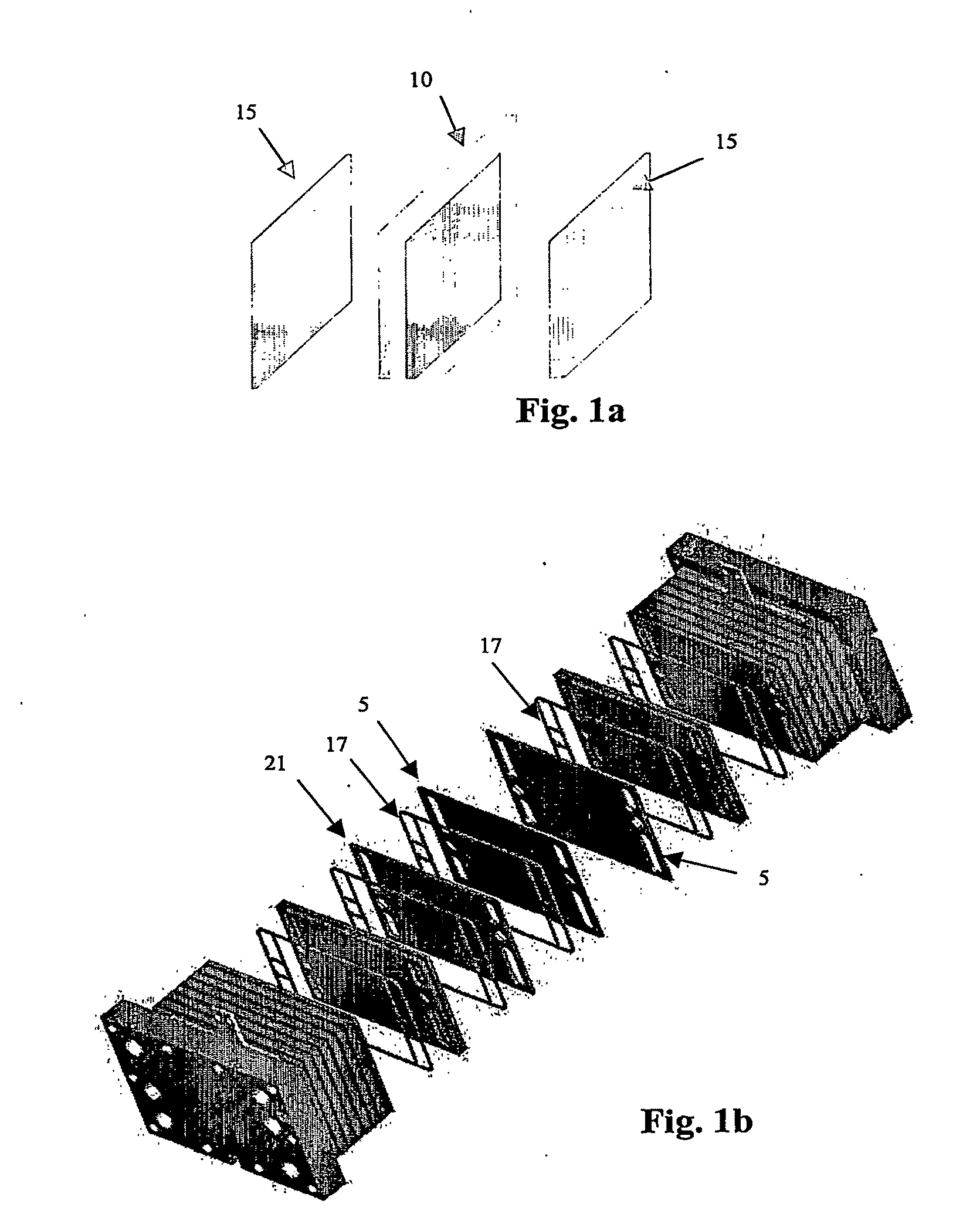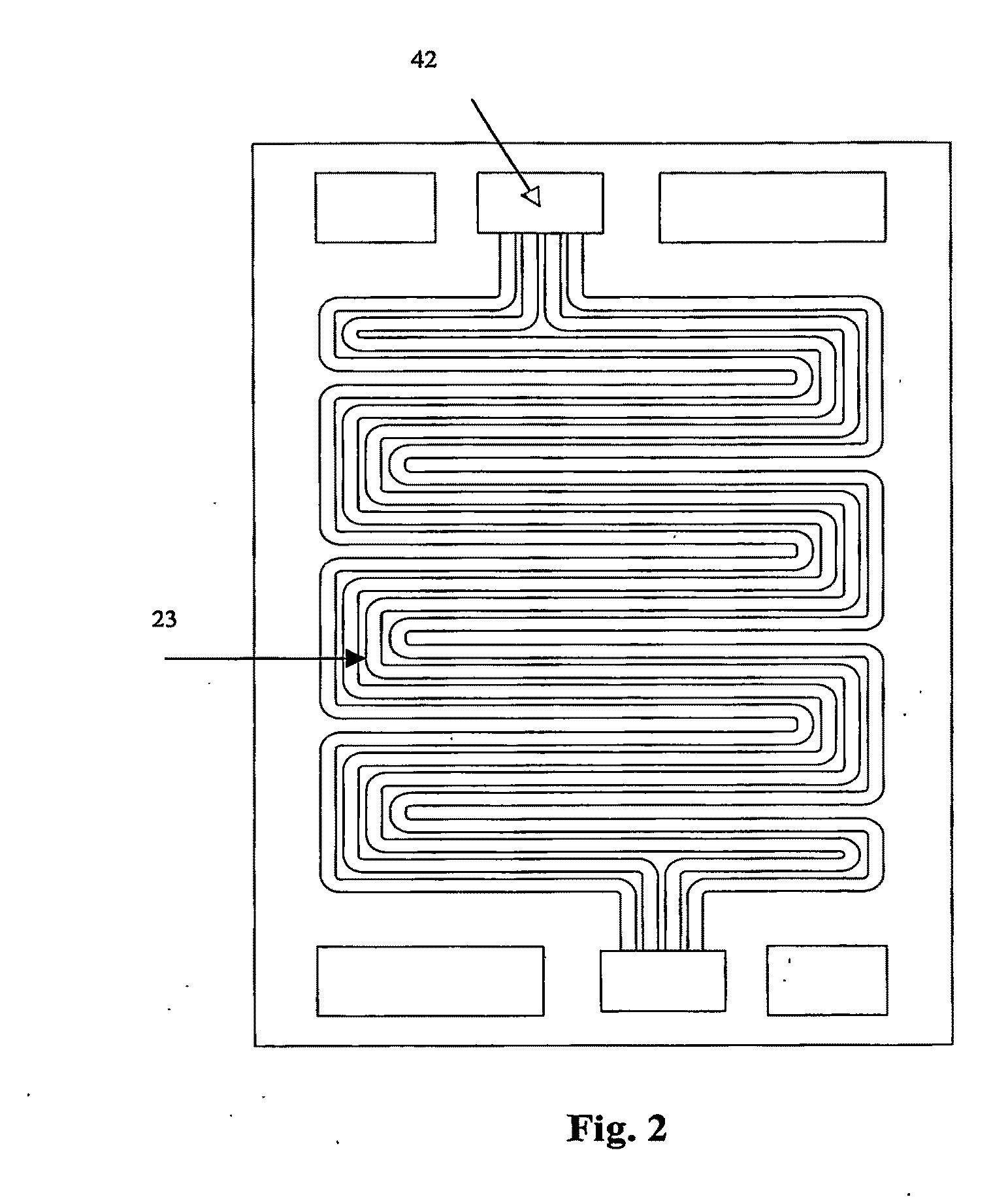Process for sealing plates in a fuel cell
a fuel cell and sealing plate technology, applied in the direction of cell components, sustainable manufacturing/processing, final product manufacturing, etc., can solve the problems of reducing the sealing action of the gasket, the sealing material may not be compatible with the plate material used, and the common use of sealing material degrade over time, so as to achieve the effect of eliminating long-term degradation issues, reducing operating pressure and temperatur
- Summary
- Abstract
- Description
- Claims
- Application Information
AI Technical Summary
Benefits of technology
Problems solved by technology
Method used
Image
Examples
example 1
Vibration Welding
[0052] Two manufactured composite plates, comprising 25% Zenite®-800, 55% Thermocarb® graphite powder and 20% graphite fibre were joined together using vibration welding method. The parts have a length of 60.9 mm, width of 17.5 mm and a thickness of 3.4 mm.
[0053] The parts were welded together using a Branson Mini II vibrational welding machine. The parts were heated to 160° C. and then placed in the vibrational welding machine, which had been preset at 1.78 mm amplitude, 1.5 mm melt down and 1.0 MPa pressure. The parts were welded at both Butt and T positions. The strength of the welded joint was measured and tabulated in Table 1.
TABLE 1Weld Strength MeasurementsWeld Strength TestStrength of Weld (MPa)T-weld strength1.69Jason max strength31.21Jason average strength25.30Jason minimum strength20.59
example 2
Resistance Welding
[0054] Two composite plates comprising 25% Zenite® 800, 55% Thermocarb® graphite powder and 20% graphite fibre were welded and joined together using the resistance welding process. The plates had a length of 60.9 mm, a width of 17.5 mm and a thickness of 3.4 mm in size.
[0055] A jig was made to apply a direct current through two electrodes attached directly to each plate. A welding machine was used as a power source. The jig also applied and controlled the pressure on the composite plates. A gas cylinder was used as the source of pressure.
[0056] The two composite plates were placed in the jig (for Butt welding position) and an 80-ampere (80 A) current was passed through the parts for approximately 2.52 seconds. 2 psig pressure was applied to the plates during the melt down process (Test Parts 1).
[0057] The weld strength of the welded joint was measured and compared with other samples in which the current, pressure or time of welding was changed. When the welding...
example 3
Resistance Welding
[0058] Two conductive composite plates, composed of the constituents similar to the one described in example-2, were joined together using resistive welding process. Both the plates had a length of 61 mm, a width of 61 mm and a thickness of 4 mm in size. The first plate possessed 1 mm wide and 1.5 mm high rib around the periphery of the plate. The second plate had a flat and smooth surface. A small hole with a radius of 2.5 mm was made in the centre of the first plate to conduct the pressure burst test with the joined plates. Alternatively, the second plate could have a 1 mm wide and 1.5 mm high rib around the periphery that corresponds to the rib of the first plate, or the second plate could have a 1.2 mm wide by 1.2 mm deep groove around the periphery of the plate that is complementary to the rib on the first plate.
[0059] Both plates were resistive welded together in a way similar to that described in example 2. The quality of joining was determined by measurin...
PUM
| Property | Measurement | Unit |
|---|---|---|
| voltage | aaaaa | aaaaa |
| pressure | aaaaa | aaaaa |
| pressure | aaaaa | aaaaa |
Abstract
Description
Claims
Application Information
 Login to View More
Login to View More - R&D
- Intellectual Property
- Life Sciences
- Materials
- Tech Scout
- Unparalleled Data Quality
- Higher Quality Content
- 60% Fewer Hallucinations
Browse by: Latest US Patents, China's latest patents, Technical Efficacy Thesaurus, Application Domain, Technology Topic, Popular Technical Reports.
© 2025 PatSnap. All rights reserved.Legal|Privacy policy|Modern Slavery Act Transparency Statement|Sitemap|About US| Contact US: help@patsnap.com



